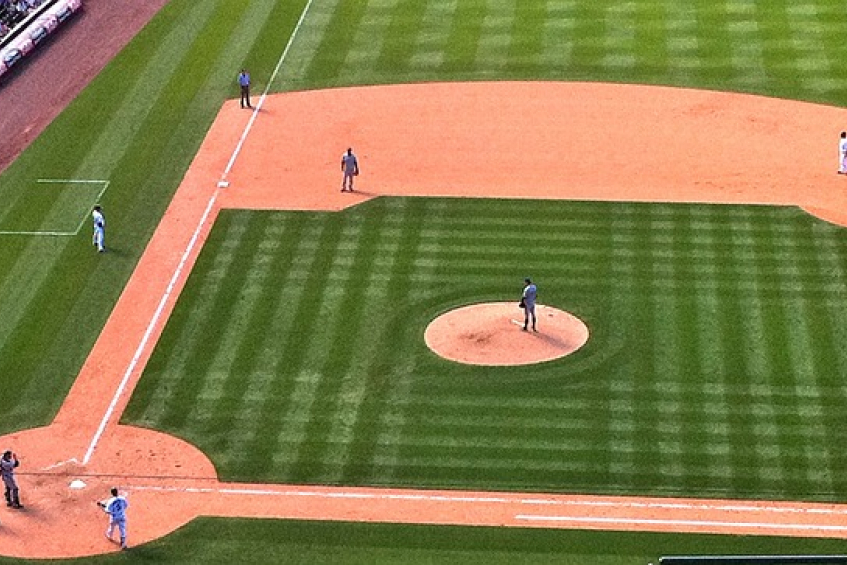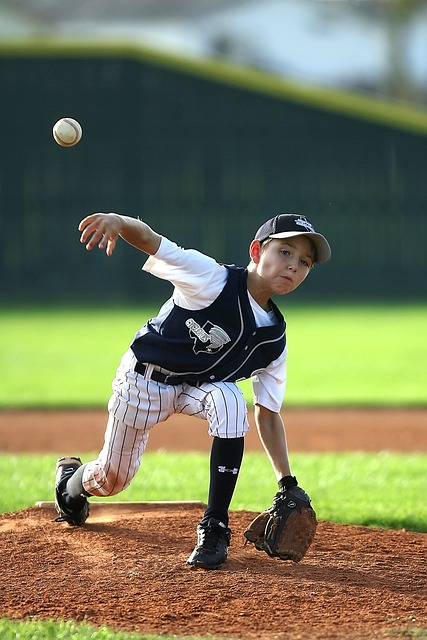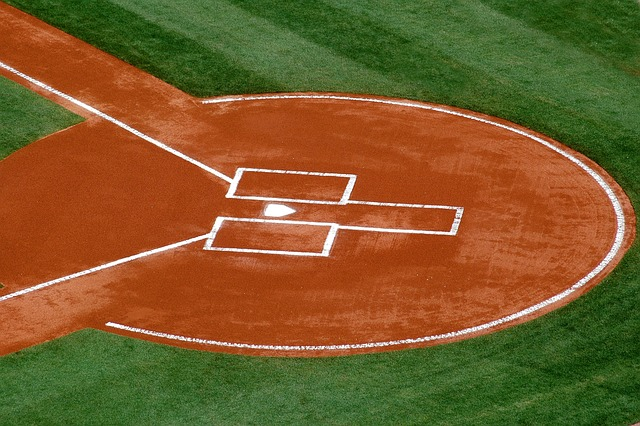
As any baseball player or fan knows, the pitcher's mound is one of the most important elements of the game. It's where the pitcher stands to throw the ball, and it can have a big impact on the speed and accuracy of their pitches. But have you ever stopped to consider the size and dimensions of the pitcher's mound?

In this blog post, we'll be demystifying pitcher's mound dimensions and explaining everything you need to know about this important aspect of the game. We'll cover the basics of pitcher's mound dimensions, the pitching distance from the pitching rubber to home, pitcher's mound height, and distance, as well as their impact on pitching performance. Whether you're a seasoned player or just starting out, this post is for you. Let's dive in!
The pitcher's mound is an elevated section in the middle of the infield where the pitcher stands to throw the ball towards home plate. The mound serves as the starting point for all pitches, making it an essential part of the game.
So, what are the standard dimensions of a pitcher's mound? According to the Official Baseball Rules, the pitcher's mound should be a ten-inch-high (10") raised area at the center of the diamond. The diameter of the pitcher's mound should be eighteen feet (18'), measured from the pitching rubber front edge to the center of the pitcher's plate. The pitching rubber is a white rubber slab that measures six inches by twenty-four inches (6" x 24") and is located at the center of the pitcher's mound.
It's worth noting that the dimensions of a pitcher's mound can vary depending on the level of play. For instance, the mound used in Little League baseball is 46 feet from home plate, while high school, college, and professional mounds are all set at 60 feet 6 inches from home plate.
In addition, there are different types of pitcher's mounds. For example, some are made of clay, while others are made of artificial turf. Some have a gradual slope, while others have a steeper incline. The dimensions and materials used for the pitching mound itself can have an impact on the game and on the pitcher's performance.
Overall, understanding the basics of pitcher's mound dimensions is essential for any player or fan of the game. In the next section, we'll explore the distance from the pitcher's mound to home plate, and how the measure it affects the game.

The pitching distance from the pitcher's mound to home plate is a critical aspect of baseball. It can affect the speed and accuracy of the pitches and has a significant impact on the game.
According to the Official Baseball Rules, the distance from the front of the rubber in front of the pitcher's plate to the rear point of home plate should be sixty feet six inches (60'6"). This distance is consistent across all age levels of of baseball, from Little League to professional play.
But why is this pitching distance so important? One reason is that it gives the pitcher enough distance to build up speed before delivering the ball. At the same time, it also gives the batter enough time to see the pitch and prepare to hit it.
It's worth noting that the pitching distance from the pitching mound to home plate can have a significant impact on the game. For example, pitchers in Little League may have a harder time reaching the plate since the distance is shorter than in high school, college, or professional play.
Overall, the pitching distance from the pitching mound to home plate is a critical aspect of the game, and understanding it is essential for any player or fan. In the next section, we'll explore the height of the pitcher's mound and its impact on the game.

The height and distance of the pitcher's mound are crucial factors in baseball. The mound's height can impact the pitcher's delivery, while of course the distance can affect the speed and trajectory of the pitches.
The Official Baseball Rules dictate that the pitcher's mound should be ten inches high. This height is consistent across all levels and age level of baseball, from Little League to professional play. The height is intended to give the pitcher a slight advantage by allowing them to throw the ball downhill.
However, some pitchers may find the ten-inch height challenging to work with. The higher elevation can cause them to adjust their delivery and may affect the pitches' accuracy.
In addition to the height, the distance from the pitcher's mound to home plate is also critical. As we mentioned earlier, the distance is 60'6". This distance is standardized to ensure a fair game, but some stadiums may have slight variations due to field dimensions.
Pitchers need to adjust their throwing technique based on the mound's height front slope and distance. They need to generate enough power and momentum to reach the plate while maintaining accuracy and speed.
Overall, the pitcher's mound's height and distance are essential components of baseball that players and fans should understand. In the next section, we'll discuss some of the rare feats in baseball related to field dimensions and the pitcher's mound.

Pitcher's mound dimensions have a significant impact on pitching performance. Even small variations in height or distance can affect the way a pitcher throws the ball and the results they achieve.
Pitchers rely on the consistent dimensions of the mound to develop muscle memory and throwing accuracy. They need to adjust their throwing technique based on the mound's height and distance. Any changes in these dimensions can disrupt their rhythm and affect their performance.
For example, a higher mound can give the pitcher an advantage by allowing them to throw the ball downhill. However, it can also require them to adjust their delivery, which can impact their accuracy and speed. Similarly, a longer distance can give the hitter more time to react, making it harder for the pitcher to throw strikes.
The impact of mound dimensions on pitching performance is evident in some of the rare feats in baseball. For example, in 1968, pitchers dominated the game due to the raised mound's height. The mound was later lowered to ten inches in 1969 to give hitters a better chance at hitting the ball.
Pitchers need to be aware of the impact of mound dimensions on their performance and adjust their throwing technique accordingly. They can work with coaches and trainers to develop strategies to overcome any challenges posed by the mound's dimensions.
In the next section, we'll discuss some tips for pitchers to improve their performance on the mound.
Pitching is one of the most challenging positions in baseball, and the pitcher's mound dimensions can make it even more challenging. Here are some tips for pitchers to improve their performance on the mound:
Practice on different mounds: Pitchers should practice on mounds of different heights and distances to get used to the variations. This can help them adjust their throwing technique and improve their accuracy.
Develop a consistent delivery: Pitchers should develop a consistent delivery that works well on different mounds. This can help them maintain their rhythm and accuracy, regardless of the mound's dimensions.
Focus on footwork: Footwork is crucial for pitchers, especially on a mound. They should focus on their foot placement and stride length to adjust to the mound's height and distance.
Stay balanced: Pitchers need to stay balanced on the mound to deliver accurate pitches. They should focus on maintaining their balance throughout the delivery and avoid overcompensating for the mound's dimensions.
Work with coaches and trainers: Coaches and trainers can help pitchers develop strategies to overcome any challenges posed by the mound's dimensions. They can provide feedback on the pitcher's technique and suggest adjustments based on the mound's height and distance.
By following these tips, pitchers can improve their performance on the mound and overcome any challenges posed by the mound's dimensions.
In the next section, we'll discuss some of the most significant feats accomplished on the pitcher's mound and how mound dimensions played a role in them.
The pitcher's mound dimensions have played a significant role in some of the most notable feats in baseball history. Here are a few examples:
Nolan Ryan's 5,714 strikeouts: Nolan Ryan is known for his powerful pitching and holds the record for the most strikeouts in MLB history. The pitcher's mound dimensions likely played a role in Ryan's success, as he was able to use the height and distance of the mound to his advantage.
Randy Johnson's perfect game: Randy Johnson's perfect game in 2004 is considered one of the most impressive pitching performances in baseball history. Johnson's height and the mound's height likely worked together to make his pitches more difficult to hit.
Sandy Koufax's 3 no-hitters: Sandy Koufax is considered one of the best pitchers of all time, and his three no-hitters are a testament to his skill. The pitcher's mound dimensions likely played a role in Koufax's success, as he was able to use the height and distance of the mound to make his pitches more challenging for batters to hit.
Pedro Martinez's 17-strikeout game: Pedro Martinez's 17-strikeout game in 1999 is considered one of the most dominant pitching performances in baseball history. The pitcher's mound dimensions likely played a role in Martinez's success, as he was able to use the height and distance of the mound to his advantage.
These are just a few examples of the impact that pitcher's mound dimensions can have on a pitcher's performance. In the next section, we'll discuss some of the challenges that pitchers may face when dealing with different mound dimensions.
While pitcher's mound dimensions can play a significant role in a pitcher's performance, they can also present some challenges. Pitchers may need to adjust their pitching mechanics when pitching on a mound with different dimensions, which can affect their accuracy and velocity.
One of the biggest challenges of pitching on a different mound is adjusting to the height of the mound. If a pitcher is used to pitching on a high mound, pitching on a lower mound can affect their mechanics and make it harder to generate power on their pitches. Conversely, pitching on a higher mound than what a pitcher is used to can result in overstriding and throwing off their balance, which can negatively impact their accuracy.
Another challenge of pitching on different mound dimensions is adjusting to the distance from the mound to home plate. A shorter distance can make it easier for pitchers to generate velocity, but it can also make it harder to deceive batters with breaking balls and off-speed pitches. On the other hand, a longer distance can make it harder to generate velocity, but it can also make it easier to deceive batters with breaking balls and off-speed pitches.
In addition to adjusting to the height and distance of the mound, pitchers may also need to adjust to the slope of the mound. Some mounds have a steeper slope than others, which can affect a pitcher's footing and balance. Pitchers may need to alter their stride length or landing position to adjust to the slope of the mound.
Overall, while pitcher's mound dimensions can play a significant role in a pitcher's performance, they can also present challenges. Pitchers need to be able to adjust their mechanics and adapt to different mound dimensions in order to be successful on the field.
The pitcher's mound has been a central part of baseball since its inception. However, the dimensions of the mound have not always been consistent throughout the history of the game. In fact, the height and slope of the mound were not standardized until the 1960s.
In the early days of baseball, the pitcher's mound was simply a pile of dirt that was used to elevate the pitcher's delivery point. The height and slope of the mound varied from field to field, and there were no regulations governing its dimensions.
In 1903, the National League introduced a rule that required the pitcher's mound to be no higher than 15 inches above home plate. However, there was still no regulation on the slope of the mound.
It wasn't until the 1950s and 1960s that the height and slope of the pitcher's mound were standardized. In 1950 season, the American League set the maximum height of the mound at 15 inches, and the National League followed suit in 1953. In 1968, MLB standardized the height of the mound at 10 inches above home plate, and both leagues established regulations for the slope of the mound at a gradual incline.
Since then, there have been no major changes to the dimensions of the pitcher's mound. However, there have been debates over the years about whether the height or distance from front edge of the mound to home plate should be changed to give an advantage to hitters or pitchers.
In recent years, some minor league teams and leagues have experimented with changing the dimensions of the pitcher's mound to see how it affects the game. For example, the Atlantic League experimented with moving the mound back two feet in 2019, and found that it led to a decrease in strikeouts and an increase in balls put in play.
Overall, the history of the pitcher's mound dimensions is a fascinating look at how the game of baseball has evolved over time. While the dimensions and pitching distances have been standardized for decades, there is always the possibility that they could change in the future to adapt to new trends in the game.
Distance between Mound and home. The distance between the pitcher's base and home plate is 60ft, six inches. Base path/distances - Infield is 90 ft long.
In all divisions the distance in baseball is 90 feet for 13 year olds and a local league option to reduce distance by 75 feet in Junior League Baseball.
A high school, university or college baseball team will be required to have front of a pitcher's plate at a distance of at least 60 feet 6 in from its base apex. It has to be at least 10 feet above the plate height.
The pitchers mound requires more attention from you in your area. An adequately maintained mound will protect your pitching and will give you an advantage on the playing field. The mound for high school through the MLB consists of 18 foot square and 10 feet taller than the plate.
The National League needed to fix Rusie's problems. How is this question answered? Bring pitchers back five feet – about 60 feet six inches. The same happened in 1894.
The usual change on mound length eventually became illegal. In the 1950's teams decided to build the mound 15 inches high. In spite of this regulation certain teams were charged with using more than the regulation height mound.
The pitcher's mound (also known as the Hill) is a dirt ridge that sits at the base line of the pitching lane. Just below the middle mound is a pitcher rubber that the pitcher touches on the pitch.
Describe the pitchers mound. (Baseball) the slight elevation of the pitcher's box. Synonyms: hills, mounds.
Following the very low score from 1968, the rule was revised so that the mound would be cut down to the current 10 inches high.
In conclusion, understanding the proper dimensions of the pitcher's mound is crucial for both pitchers and baseball fans alike. It is important to note that there is no "perfect" size for the pitcher's mound, as different pitchers may perform better with different mound heights and distances.
Pitchers must also be aware of how the mound dimensions affect their pitching mechanics and adjust accordingly. Likewise, fans who understand the importance of the pitcher's mound dimensions can better appreciate the skill and strategy involved in pitching.
Whether you are a pitcher looking to improve your performance or a fan wanting to deepen your understanding of the game, the pitcher's mound dimensions are a vital aspect of baseball that should not be overlooked. By paying attention to these dimensions and their impact on the game, you can better appreciate the artistry and athleticism that goes into every pitch.
Chris Sloan is a former baseball league commissioner and travel baseball coach who has made significant contributions to the sport. In 2018, he founded selectbaseballteams.com, a website that helps parents find youth and travel baseball teams in their local areas. Since its launch, the website has experienced impressive growth, offering a wealth of resources including teams, news, tournaments, and organizations. Chris's unwavering passion for baseball and his innovative approach to connecting parents with quality baseball programs have earned him a respected reputation in the baseball community, solidifying his legacy as a leading figure in the world of youth and travel baseball.
There are 0 comments on "Pitcher's Mound Dimensions Demystified: Everything You Need to Know"
chandler allen says:
"Hi my name is chandler, i’ve enjoyed..."
On Wanting to tryout for summer ball. as an 18 year old
david graham says:
"With no current MLB team in Canada,..."
On With no current MLB team in
Charles Chavez says:
"To All Coaches: Do you have13U or..."
On Looking for Games